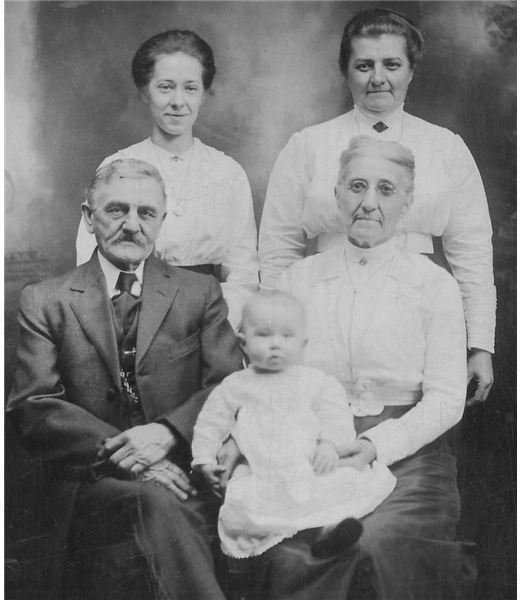We Are Family! Preschool Crafts for Fun and Learning
All Kinds of Families
Just like families, craft ideas incorporating this concept can come in all different shapes and sizes. Remember that open-ended crafts work well with preschoolers, as well as activities that encourage children to exercise their creativity and freedom of choice.
Creative Craft Ideas
Family Stick Puppets
Materials:
- Popsicle sticks
- Foam balls
- Yarn
- Fabric scraps
- Fun foam
- Googly eyes
- Glue
Directions:
This is the perfect opportunity to empty out your craft supply closet! Show children how to cut out simple clothing shapes from the fabric scraps, or provide a stencil for children to trace and then cut pants, dresses and shirts from the scraps. Use a styrofoam ball for a head on the stick puppet and push it down slightly onto the popsicle stick. Decorate with yarn hair, googly eyes and felt or foam scraps. Allow the children to create a stick puppet to represent each person in their family. You can decorate the classroom with these creative puppets or leave them in your reading or manipulative center for puppet play.
“We Are Family” Class Mural
Materials:
- Long sheet of butcher paper
- Markers, crayons or fingerpaint
- Fabric scraps
- Yarn
Directions:
Children will work cooperatively to create this craft. Have all of the children lie down on the sheet of butcher paper and hold hands with the child next to them. Use a marker to trace the outline of the class, and label each shape with the child’s name above their heads. When the tracing is finished, have children color or fingerpaint their outlines, or provide fabric scraps and markers for children to decorate themselves! Hang this beautiful mural up where all can enjoy it.
Family Portraits
Materials:
- Construction paper
- Watercolors, tempera paint or crayons
- Popsicle sticks or cardboard framing mats
- Craft supplies
- Glue
Directions:
Give children a chance to discuss all of the important family members in their lives. Some children may consider a close family friend or member, or consider Uncle Jim a part of their immediate family because he lives with them. Most children consider pets to be very important members of their family. Give each child a large sheet of construction paper and allow them to use watercolors, tempera paints or crayons to depict each important member of their own family. Ask children to tell you about the people in the picture and help them label each person they have included in the portrait. When children are finished creating their portraits, use popsicle sticks to create a frame for them. You can also use a cardboard framing mat as a frame for the children’s artwork. These cardboard framing mats come in a variety of sizes and colors, and can be decorated easily using craft supplies such as pom poms, googly eyes, fabric scraps, pipe cleaners and fun foam. As a circle time activity, give each child a chance to show the class their family portraits. Be sure to compare and contrast the similarities and differences in each child’s portrait. Hang the portraits and crafted frames in your classroom or present them to families as gifts from their preschoolers.
Family Circle - Teaching Notes
You may want to discuss family similarities and differences as a large group circle time activity before trying any of the above family crafts with your preschoolers. Keep the discussion going as you create together! While children are explaining the people in their family, be sure to point out that familes come in all different shapes and sizes. Explain that the word family can also mean a group of people that love each other, work together and take care of one another. Family does not necessarily have to mean the people that live together in a home. Tell children that even their preschool class is a family because you are a group of people who work together and care for one another (demonstrated by the class mural). With this broader description, see how many other examples of families children can come up with. Try and find some pictures of families in magazines or online that look like the families of the children in your class, as well as those who are very different.
Resource: Cryer, Debby, Active Learning for Fours. Addison-Wesley Publishing (1996).
Photo Credit: bandini https://morguefile.com/archive/display/150243
